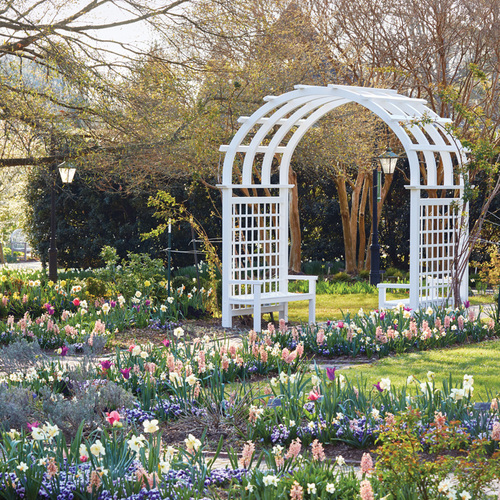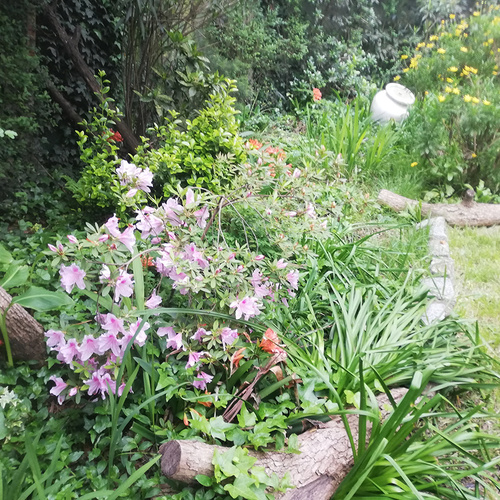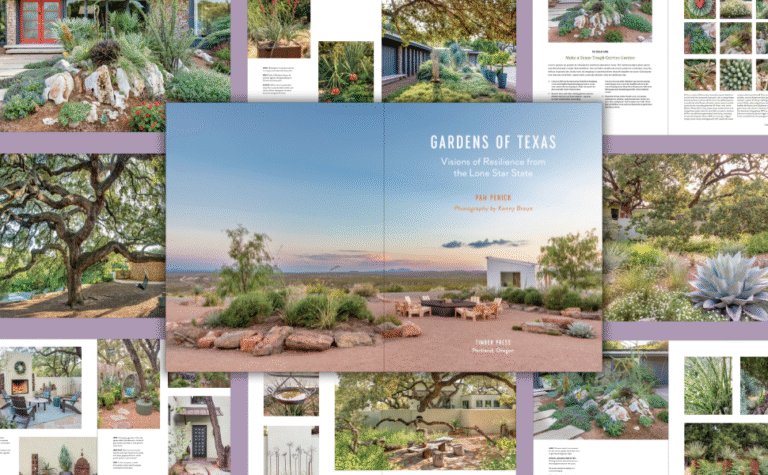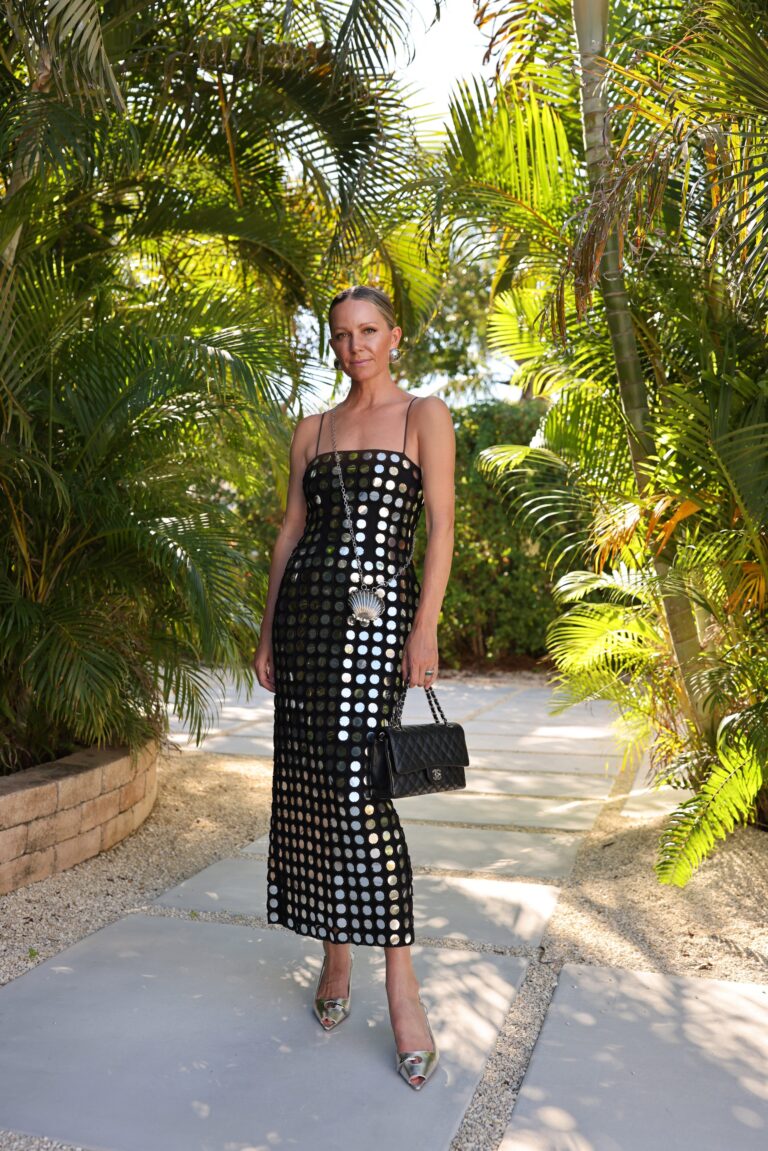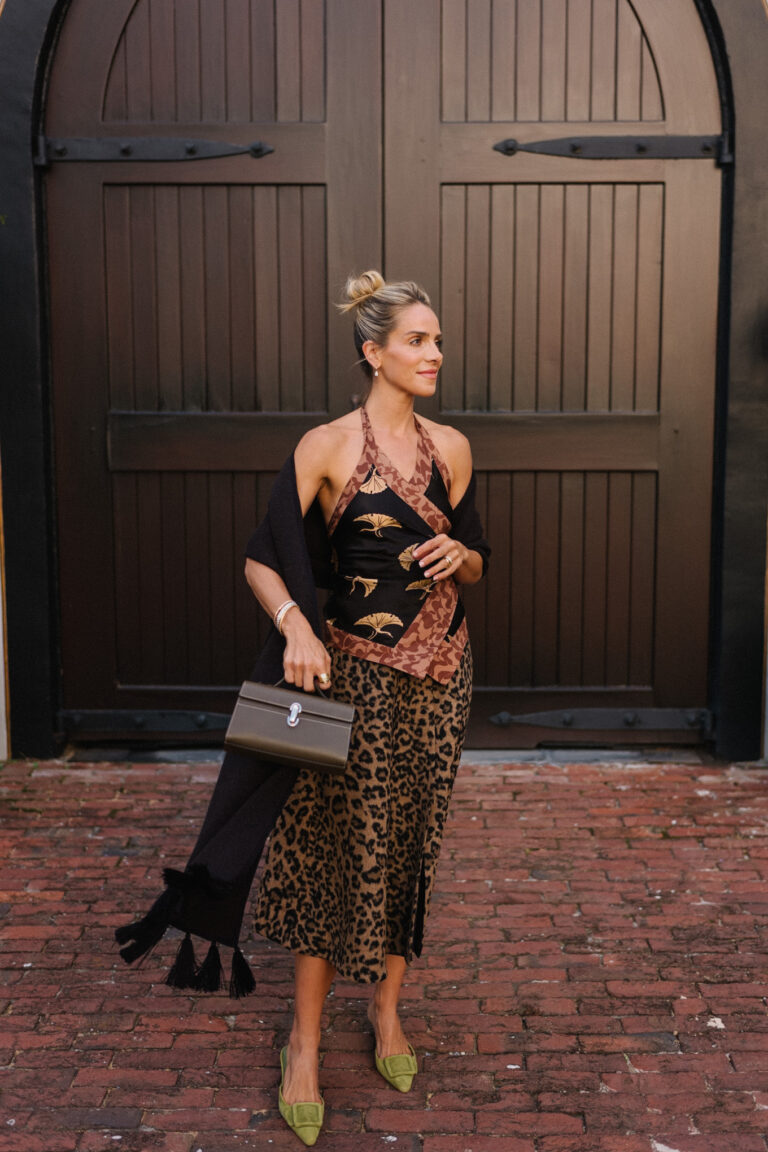There was a cardboard box with me at the closing for my first house. I signed my name about 3,000 times, handed over most of my savings, got the keys, and drove to my new address. But instead of walking around inside or measuring the spot where the couch would go, I grabbed that cardboard box full of crocus bulbs and started planting. Because I have my priorities straight, you can always sit on the floor if you don’t have a couch, but you can’t have a spring without crocuses.
Plan to buy and plant spring bulbs in the fall
A hearty helping of spring-flowering bulbs will add tremendous flower power to early-season displays. For some, the most challenging part of the equation is remembering to order bulbs and plant them in fall. If this has been a problem for you in the past, consider starting your planning in summer, when most bulb suppliers allow pre-ordering and popular varieties haven’t yet sold out.
Below, you’ll find a sampling of beauties that could be the starting point for an extraordinary show next year. Before you start shopping, let me give one final piece of advice: More is more. My daffodils literally stop traffic. I’m not exaggerating—I see cars stopping, windows rolling down, and fingers pointing every spring. All my neighbors have beautiful little clumps of daffodils, while I plant hundreds. Numbers make the difference, and bulbs are cheap. So don’t skimp on your quantities, and your spring displays will be spectacular for years to come.
Your Guide to Spring Bulb Success
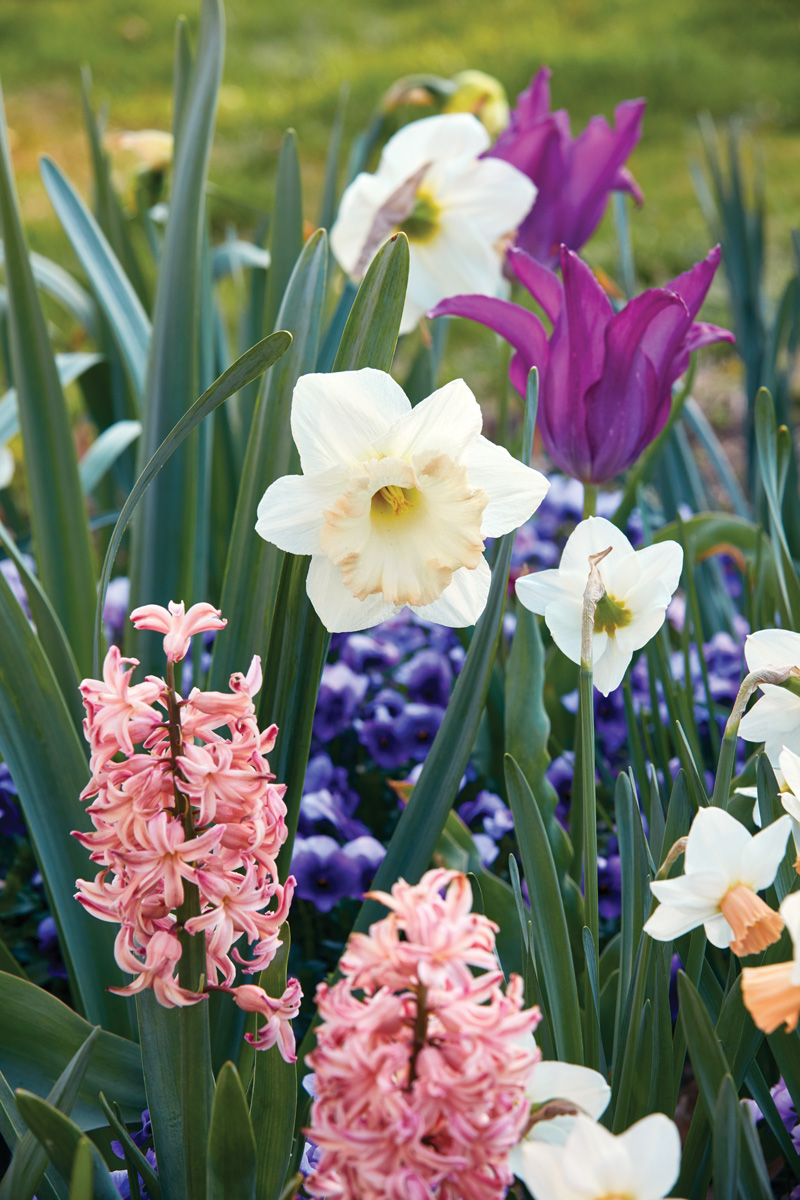
Shop for spring bulbs with synchronicity in mind
Figuring out which blooms emerge and peak at the same time will help you create thrilling combinations of colors and shapes. There is no wrong way to add more bulbs to your garden, but I’m happy to share a few tricks that guide my bulb shopping each year.
Start by taking a look back.
Bulbs can be tucked in just about anywhere in a new garden, but it is harder to find spots amid mature plantings. Review spring garden photos, looking for gaps and holes. Perhaps last year’s tulip display was too sparse, or that bed by the front walk looked empty during daffodil season. Remembering to snap spring photos of the spots where you’d like to add bulbs takes a lot of the guesswork out of the fall buying-and-planting season.
Check for gaps in your camera roll.
If you notice stretches of time when you didn’t take any pictures, that tells a story too. Most of us take garden photos when things look great. If you see a flurry of early daffodil photos followed by a long gap until June roses start blooming, try some late daffodils, tulips, or alliums to counteract that late-spring lull.
Your summer garden will also provide planting cues.
The most annoying thing about spring bulbs is their foliage. The leaves need to stay up to photosynthesize, but bulb foliage doesn’t often exit the scene gracefully. Whenever possible, plant bulbs in spots where perennial foliage will hide yellowing leaves. Summer is the best time to scope out likely perennials. Native warm-season ornamental grasses like switchgrass (Panicum virgatum and cvs., Zones 5–9) or little bluestem (Schizachyrium scoparium and cvs., Zones 3–9) are particularly good for this; they emerge late enough to not interfere with the bulbs’ floral display, but early enough to hide the worst of the foliage.
Unusual spaces hold plenty of potential.
Nearly any corner of the garden can be an ideal spot for bulbs. I particularly love tucking them into the vegetable garden. The bed where I will plant tomatoes later is a great spot for tulips. In this out-of-the-way location, I can cut big fistfuls of flowers without messing up the displays in my ornamental beds.
Layer beauty into lawn areas.
Early bloomers that go dormant fast are the best options for a bulb lawn. It takes a little patience to not start mowing until their foliage begins to yellow, but it is so worth it for the carpet of flowers early in the year.
Containers offer key advantages.
Bulbs planted in leftover plastic nursery pots can easily be overwintered in an unheated garage or shed. Once the plants are up and starting to develop buds, they can be slipped, pot and all, into larger containers and window boxes. You can then pop them back out as soon as the blooms fade, before the ugly foliage stage kicks in. This is my favorite way to try new varieties before investing in bigger plantings. If bulbs don’t make the cut, into the compost heap they go.
Spring Bulb Guide: Best Types to Plant
Crocuses arrive bright and early
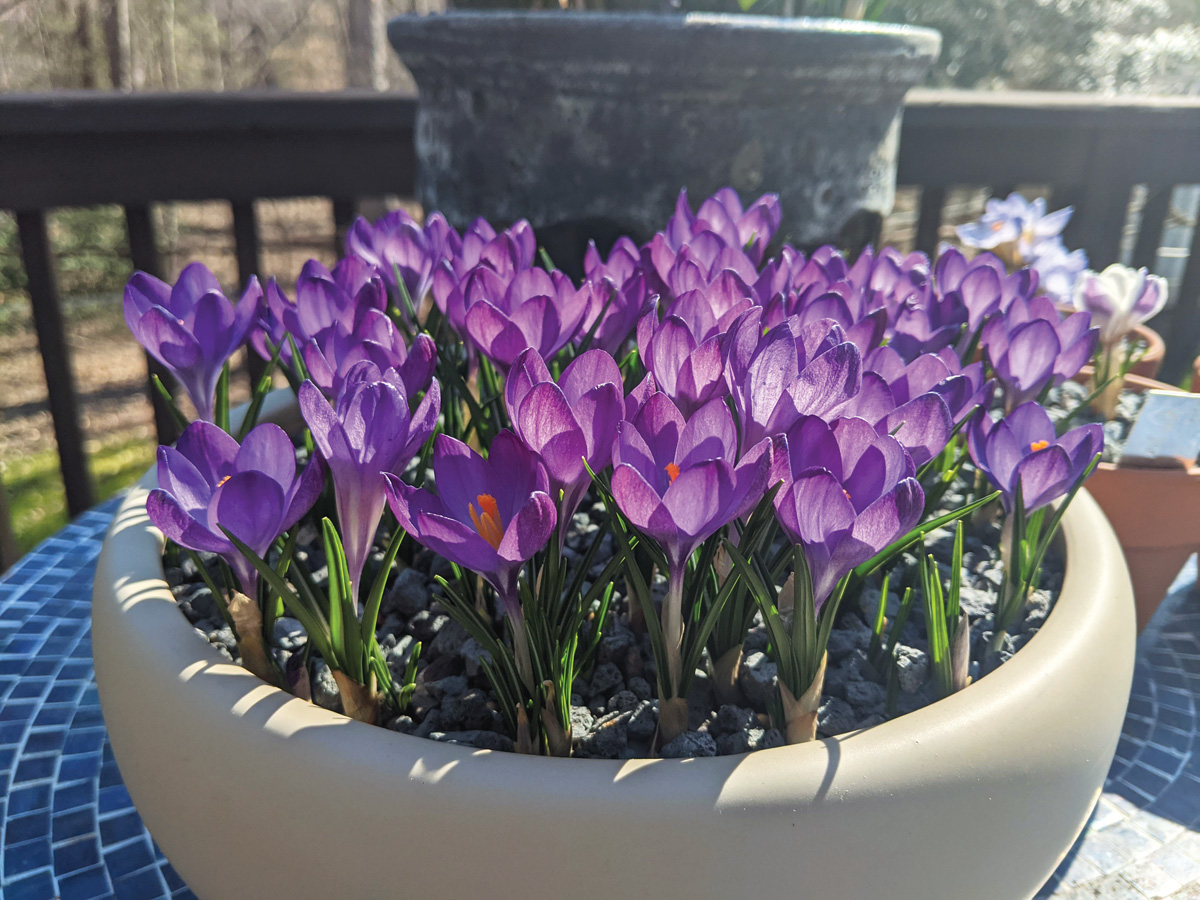
Crocus spp. and cvs.
Zones: 3–8
Size: 3 to 6 inches tall and 2 to 4 inches wide
Conditions: Full sun; well-drained soil
Native range: Southern, central, and eastern Europe, western and central Asia, and northern Africa
Plant ‘Ruby Giant’ (C. tommasinianus ‘Ruby Giant’), and that’s all you really need to know about crocuses. I’m exaggerating, of course. All crocuses are stunning, and you’ll never be unhappy that you added more of this lovely flower to your landscape. But if you had to plant only one cultivar, ‘Ruby Giant’ is the one. It is a selection of C. tommasinianus, an incredibly vigorous, squirrel-resistant, and super-early-flowering species. While the typical form is an uninspired, washed-out lavender, ‘Ruby Giant’ was selected for much bigger flowers in a rich, intense purple that is absolutely gorgeous and perfect. Order at least 200 this fall, and you will thank yourself for years to come.
When you are ready to move past ‘Ruby Giant’, there are many other goodies to explore. The large dutch hybrids like rich purple ‘Flower Record’ (C. vernus ‘Flower Record’), pure white ‘Jeanne d’Arc’ (C. vernus ‘Jeanne d’Arc’), or striped ‘Pickwick’ (C. vernus ‘Pickwick’) bloom a little later than other crocuses but put on an incredible show with oversized goblet-shaped flowers. For more delicate, intricate blooms, look to the snow crocus group. These are some of the earliest bulbs to bloom, and feature soft yellows from ‘Goldilocks’ (C. chrysanthus ‘Goldilocks’) and the white flowers intricately brushed with purple of ‘Lady Killer’ (C. chrysanthus ‘Lady Killer’).
If squirrels are a problem, try laying wire mesh over the beds after planting, or choose selections of C. tommasinianus. And be patient. While newly planted bulbs in loose, recently disturbed soil are easy for those fluffy rodent raiders to find, established plantings tend to be left alone.
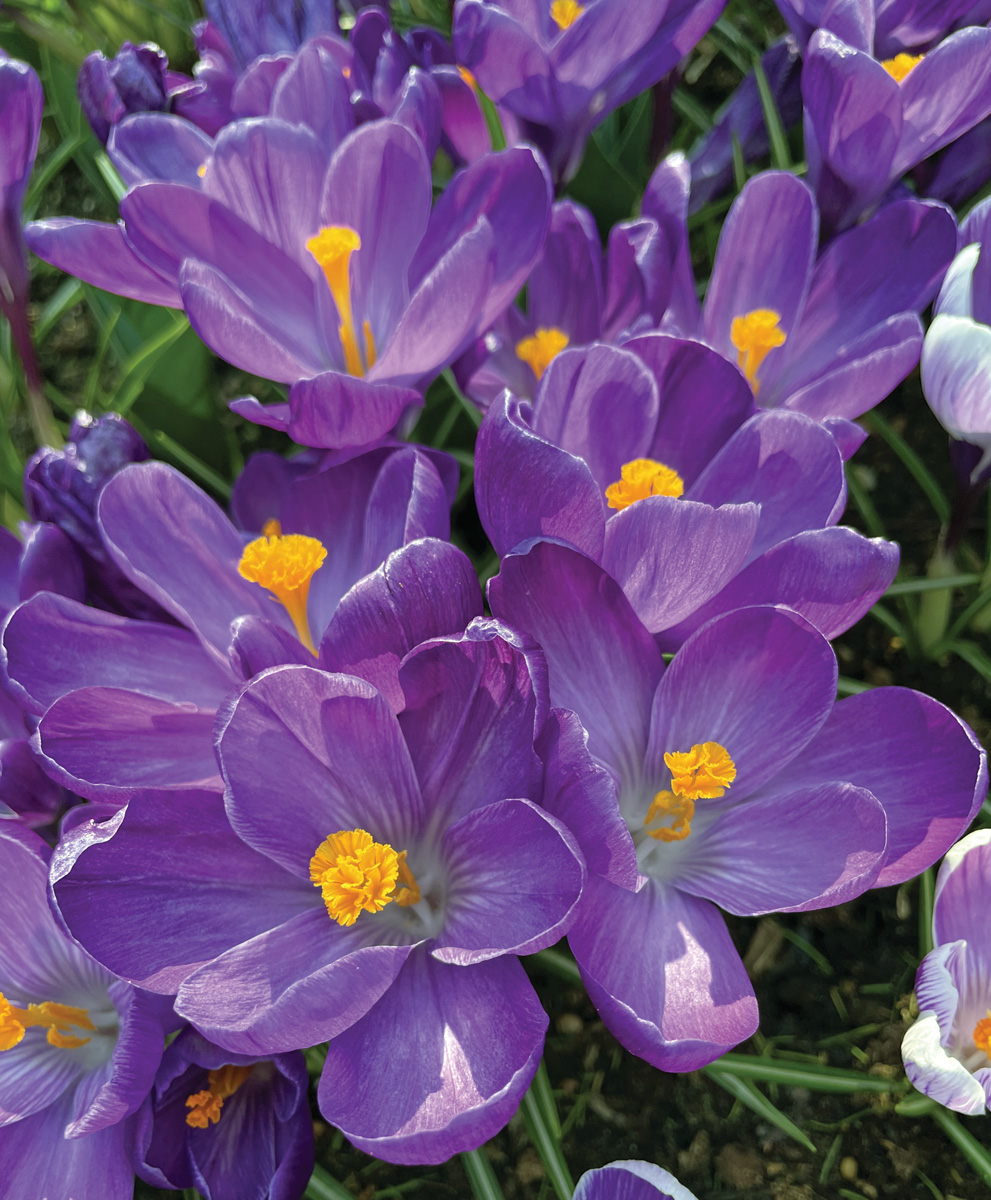
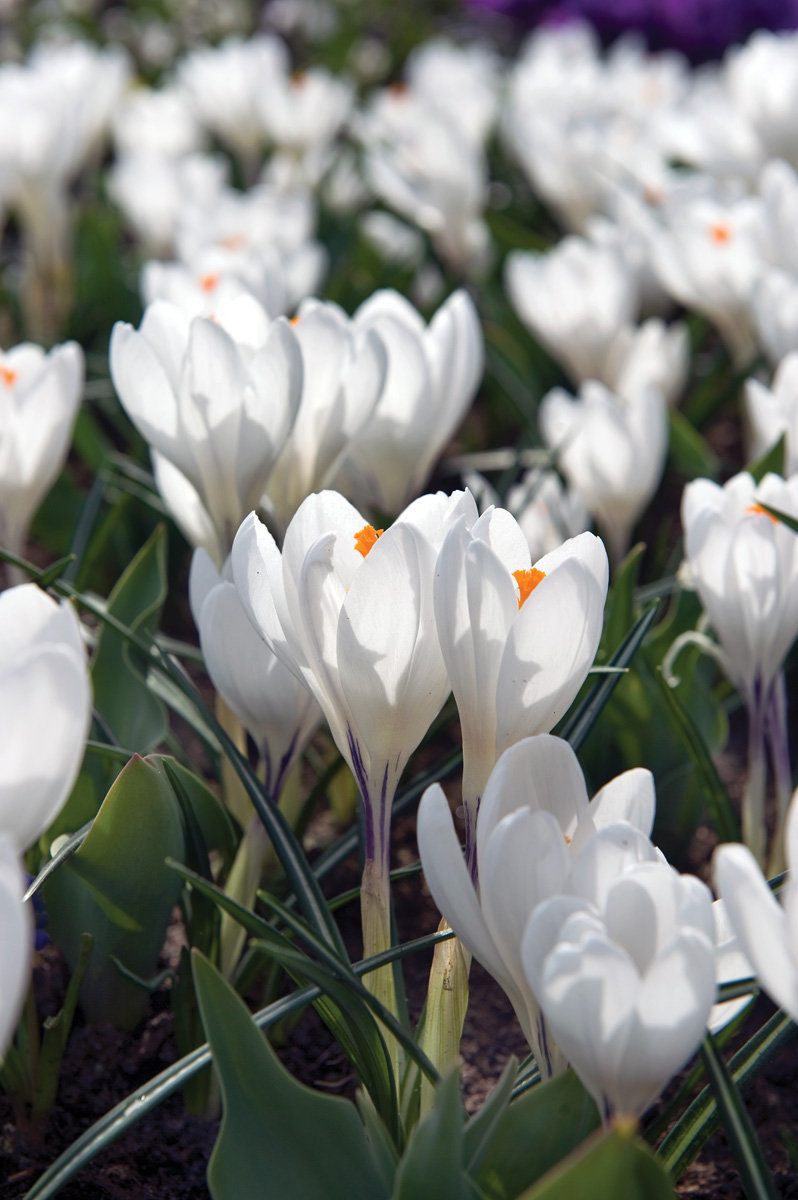
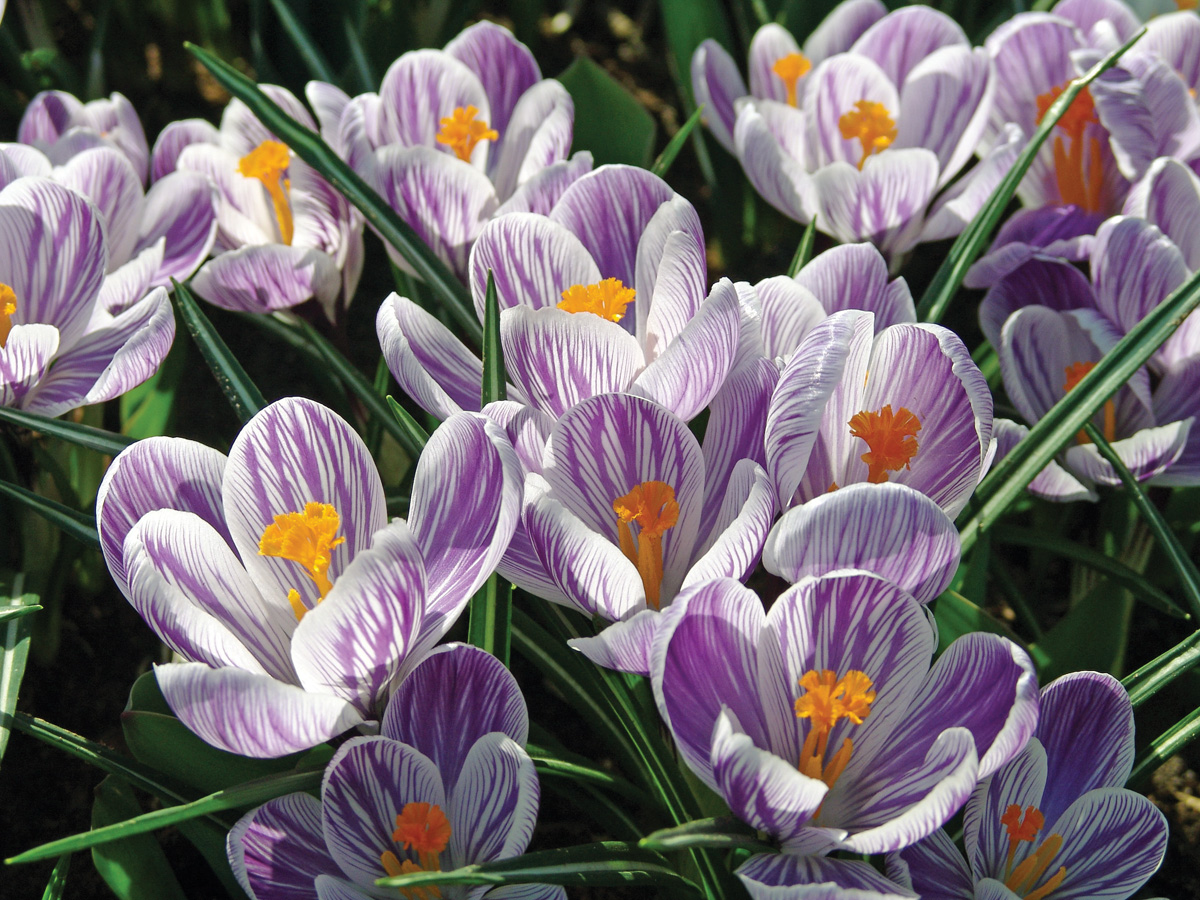
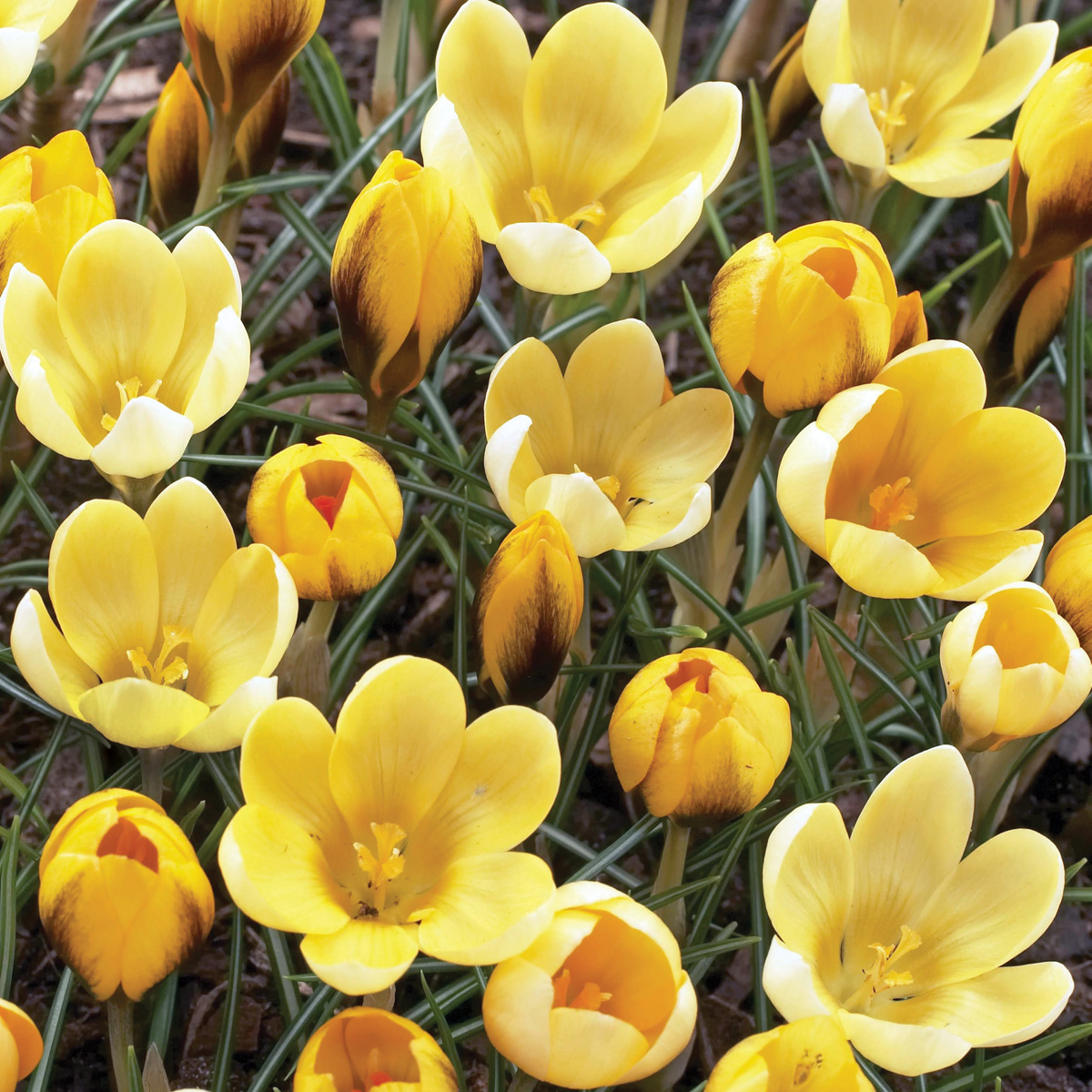
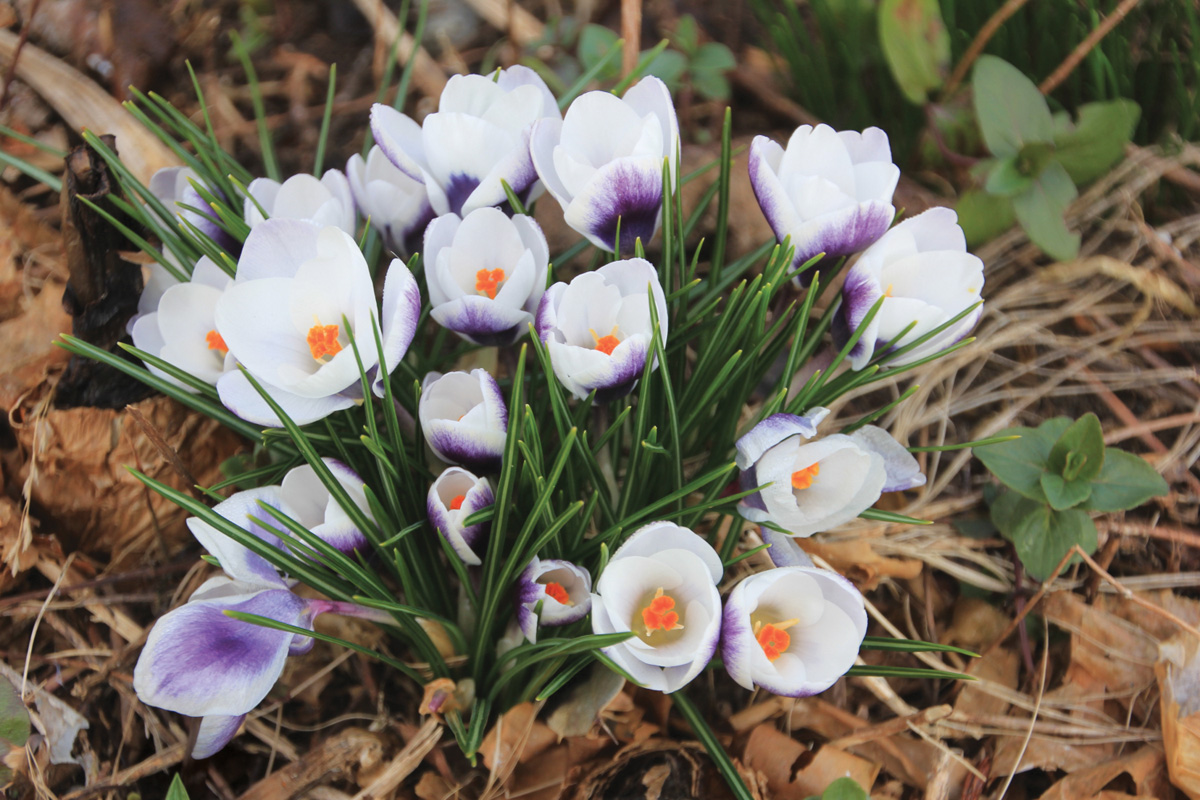
Daffodils are dependable and cheery spring bulbs
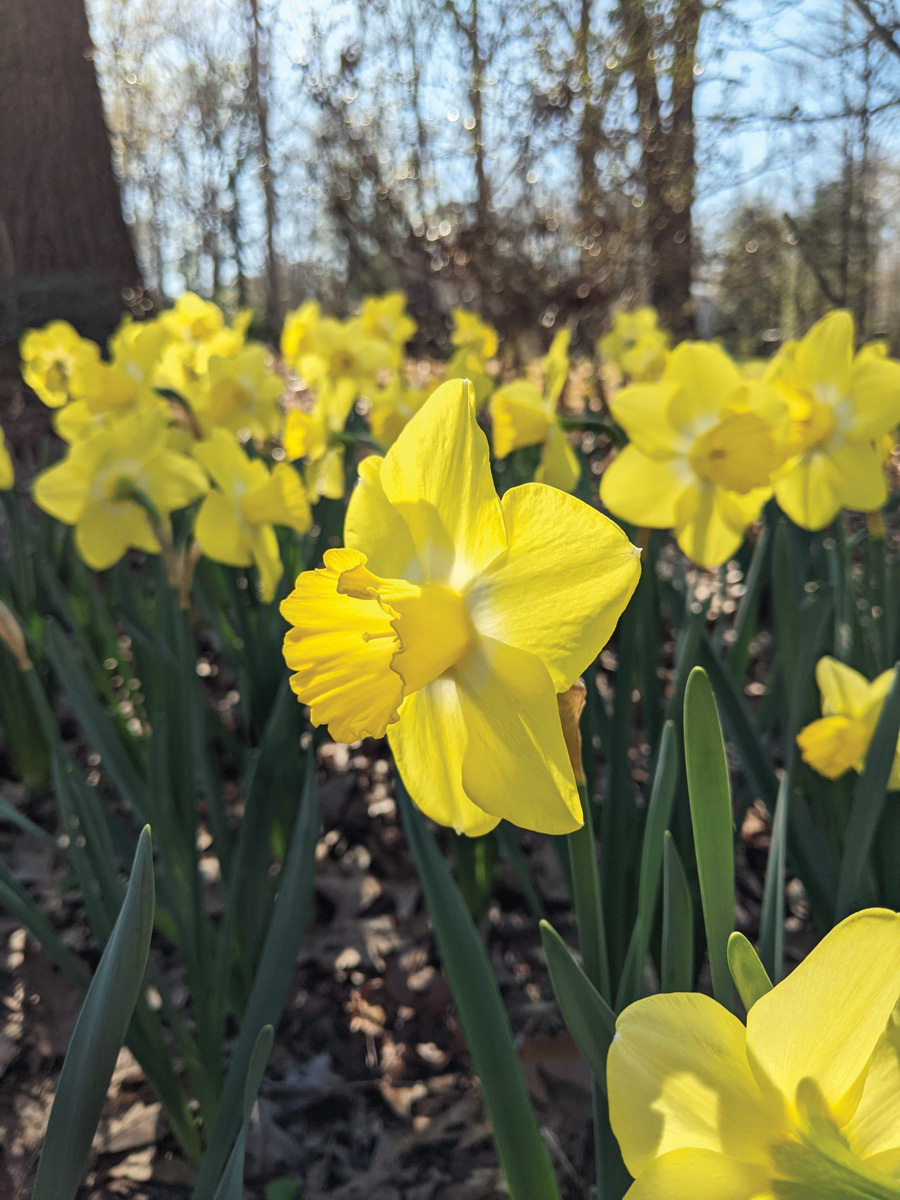
Narcissus spp. and cvs.
Zones: 3–9
Size: 6 to 30 inches tall and 6 to 12 inches wide
Conditions: Full sun; well-drained soil
Native range: Europe and North Africa
Every daffodil flower is beautiful, but there are too many catalogs and websites that give us just one close-up of a single bloom or depict mass plantings that exist only in Adobe Photoshop. To me, the difference between an exceptional daffodil and one that is just okay is not determined by pretty flowers but by how a mature clump looks. How many blooms does it produce? Are those flowers held up above the foliage where you can really see and enjoy them? How long do they last?
If you can, go out and see daffodils in public gardens or on garden tours before shopping. Try a few bulbs in a back corner to see how they perform before you commit to a mass planting. Or shop from small, specialty growers like Qdaffs and PHS Daffodils that show pictures of actual plants, not photoshopped ideas of what they might be. Daffodils are good choices if you have a lot of deer, rabbits, or other hungry mammals in your garden, as they are resolutely pest resistant. All they really need to thrive is plenty of sun and soil that isn’t overwhelmingly wet.
Over the years, there are a few top performers I have come to love. ‘White Petticoat’ (N. bulbocodium ‘White Petticoat’) is a miniature with delicate grassy foliage and narrow petals arranged in a subtle starburst. After its first flowers begin to fade, another round will come up to replace them. ‘Fellow’s Favorite’ (N. ‘Fellow’s Favorite’) is the best classic yellow trumpet in my book. ‘Chiquitita’ (N. ‘Chiquitita’) is from the jonquilla group of hybrids, which produce clusters of small, very fragrant flowers that completely cover the foliage. ‘Thalia’ (N. ‘Thalia’) is an elegant, fragrant, late variety with pure white blooms. ‘Moonlight Sensation’ (N. ‘Moonlight Sensation’) is simply the heaviest-flowering daffodil I’ve ever grown. Each bulb puts up multiple stems, which are topped with a cluster of cream-colored flowers.
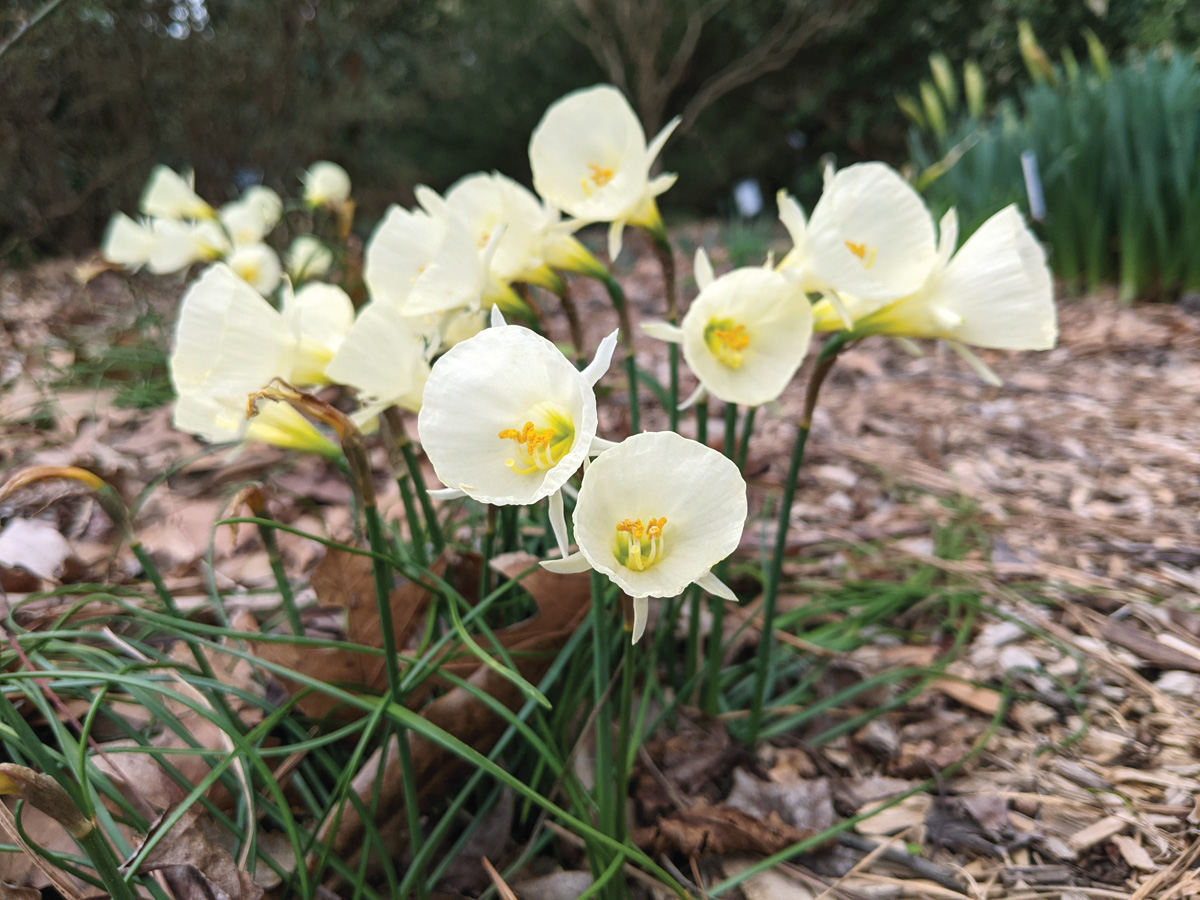
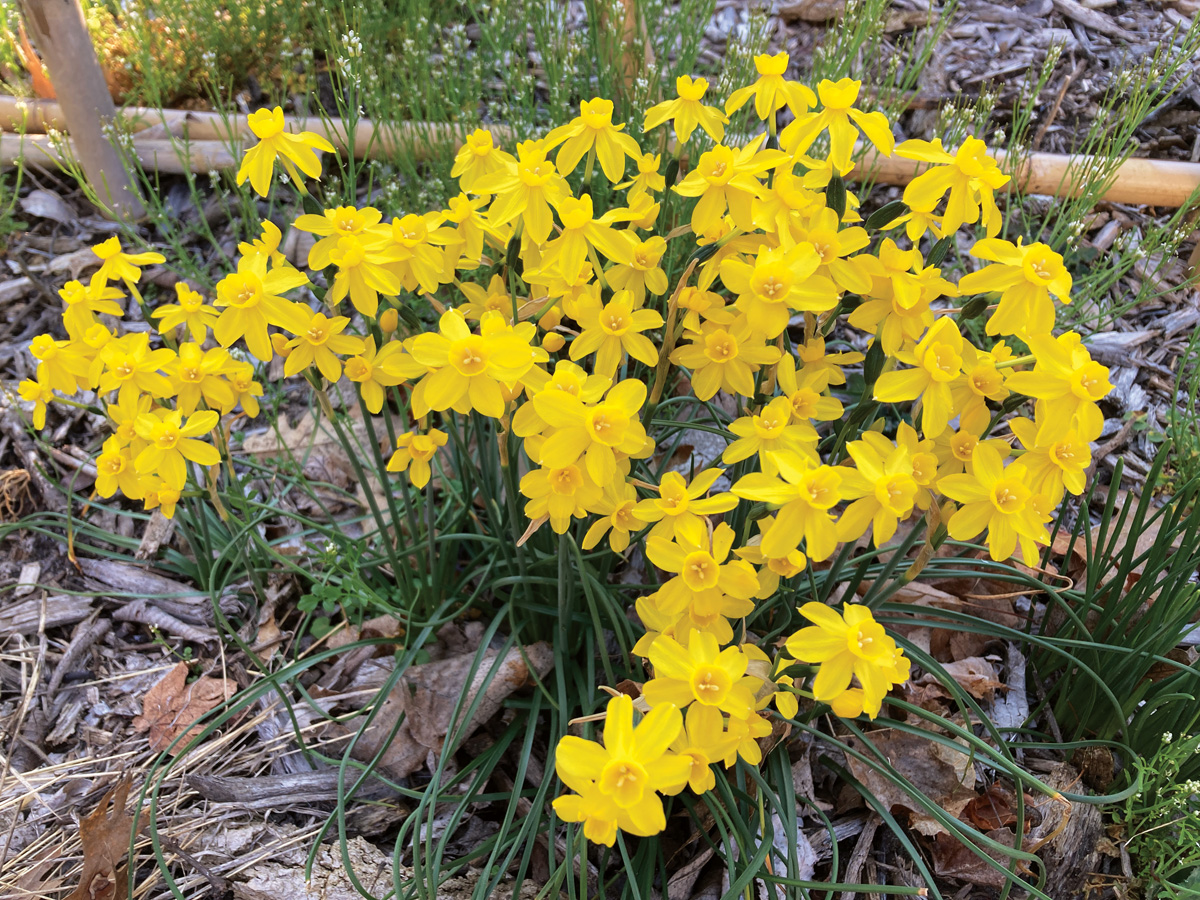
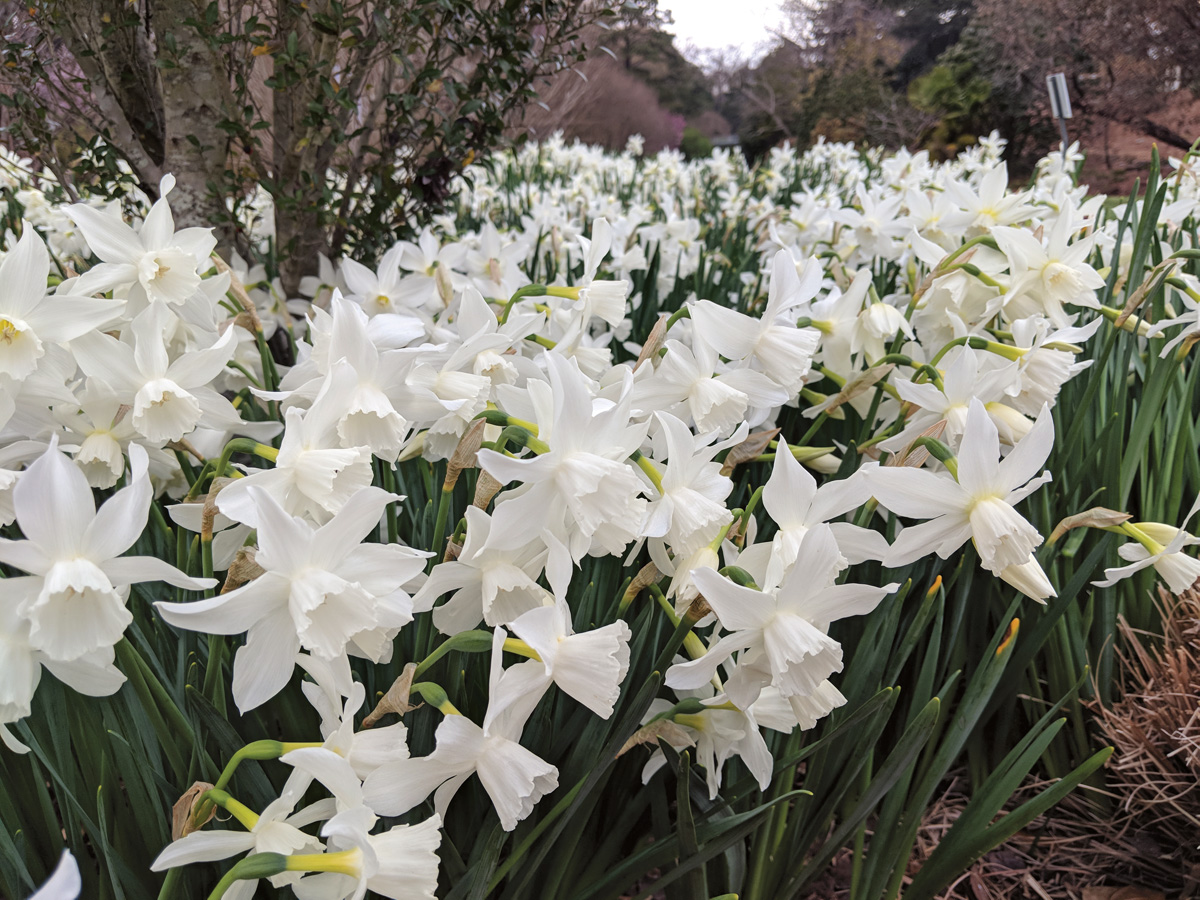
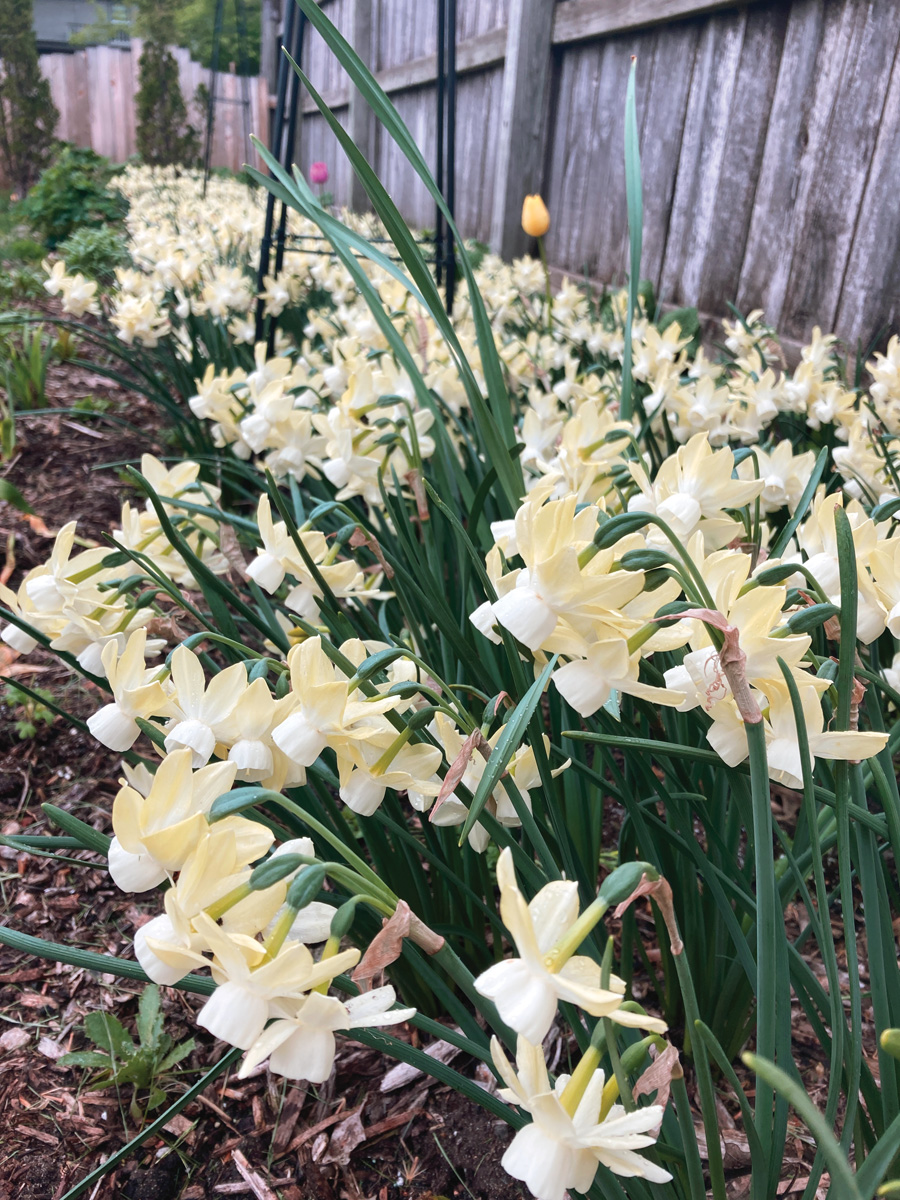
Grape hyacinths stand out in a crowd
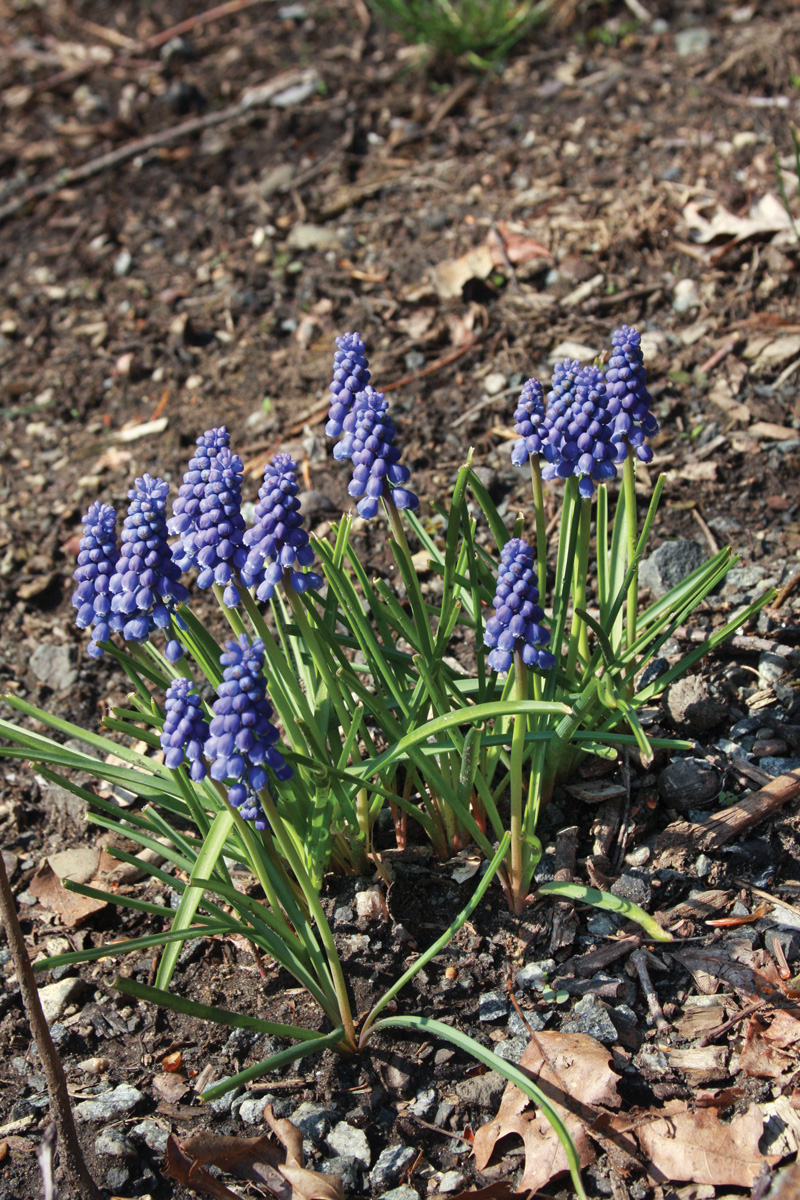
Muscari spp. and cvs.
Zones: 4–8
Size: 6 to 8 inches tall and 2 to 4 inches wide
Conditions: Full sun to partial shade; well-drained soil
Native range: Southeastern Europe and southwestern Asia
There are a lot of great things about grape hyacinths, but let’s start with their most unexpectedly wonderful feature: their foliage. Established plantings will put up leaves in fall, creating a low green mass that hangs around until spring. This useful trait allows you to use them as living markers that let you know where other bulbs are planted. Nothing is more heartbreaking than slicing an old bulb in half with a shovel while trying to plant a new one. If you put grape hyacinths at the edges of a big block of daffodils, you will know exactly where not to dig when you are trying to find space for a new bag of tulips.
Setting their function as bulb-planting markers aside, these are excellent plants in their own right. The classic dark blue flowers of straight-species grape hyacinth (M. armeniacum) are ideal for providing a cool counterpoint to bulbs with warm- colored flowers. But my favorite is the variety ‘Valerie Finnis’ (M. armeniacum ‘Valerie Finnis’). She is just like the typical form in every way except the blooms are an incredible soft powder blue. There are white forms too, but I don’t see the point. The light blue of Valerie is perfect.
Muscari are generally pest resistant, though rabbits may nibble on the foliage a little. They will grow and bloom well under deciduous trees, since their foliage is up during the winter months when the tree leaves are down.
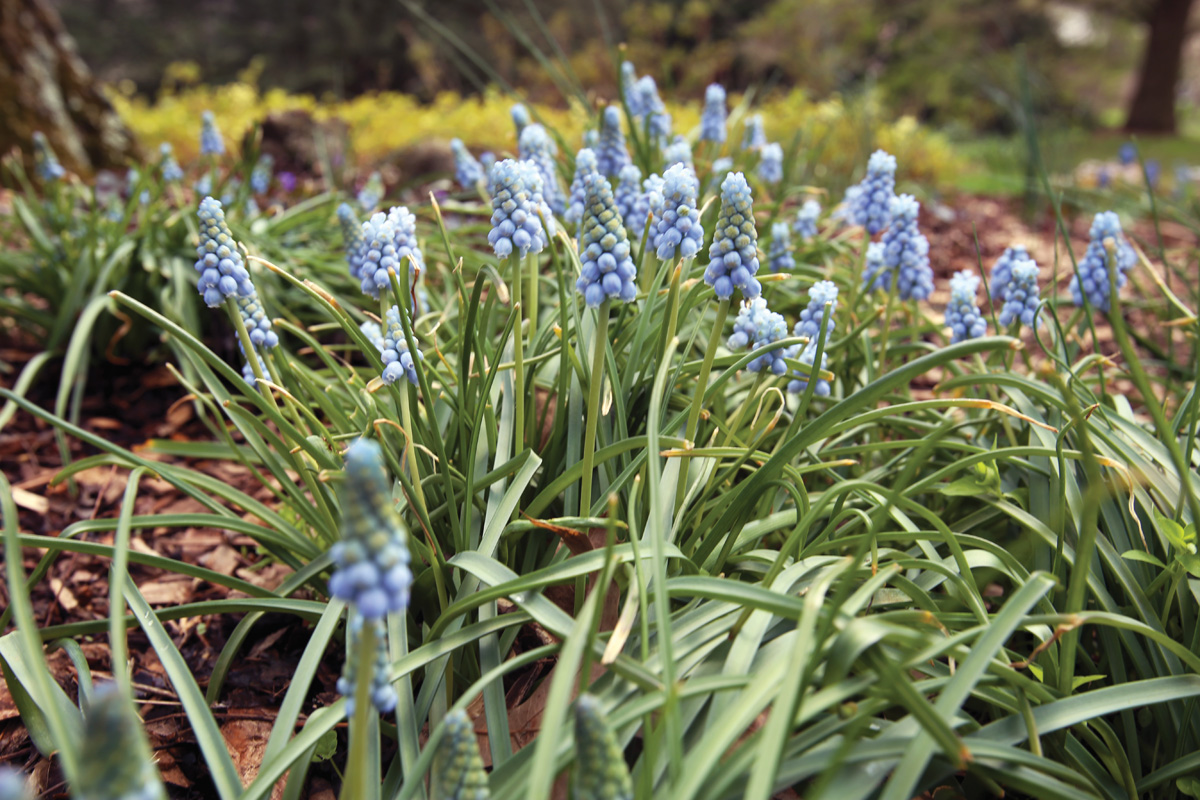
Tulips look best in small groups
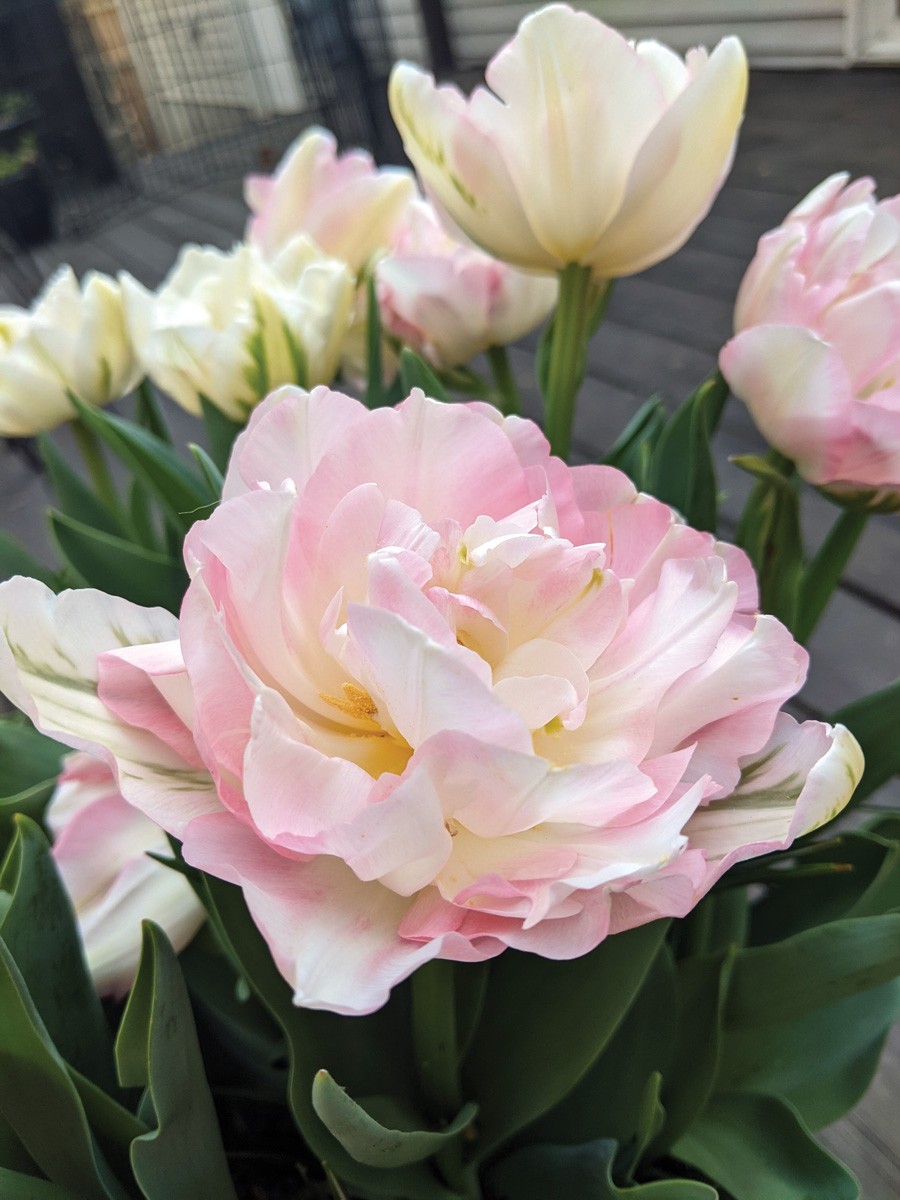
Tulipa spp. and cvs.
Zones: 3–8
Size: 6 to 30 inches tall and 4 to 12 inches wide
Conditions: Full sun; well-drained soil
Native range: Southern Europe to central Asia
Tulips are the only bulbs where I practice anything like restraint. Big masses look loud to my eye and even a little bit boring. So I enjoy tulips by the dozen, planting them in thoughtful clumps where I can get up close and enjoy their details. For this, I tend to steer away from the screaming reds and yellows and sort through the rich tulip diversity for blooms that repay closer inspection. The double, soft pink flowers of ‘Angelique’ (T. ‘Angelique’) for example, look amazing when spotlighted in a container on the front steps. The pointed orange petals of ‘Ballerina’ (T. ‘Ballerina’) bring grace and elegance when dotted through my perennial garden, where they come back reliably each year. The miniature ‘Little Beauty’ (T. ‘Little Beauty’) has mesmerizing blossoms, red at the tips, shifting through lavender and then deep blue at the eye. Plant any of the fringed tulips and you won’t be disappointed by the show, with each petal edged in crystalline shards that look too delicate to be real. Frankly, I think parrot tulips are a little ugly, but that’s just me. You do you. The nice thing about tulips is that there are so many varieties, there is something for everyone, no matter what makes your heart sing.
As pretty as they are, there are a few downsides to growing tulips. First, they are apparently as tasty as they are beautiful. Deer enjoy nibbling on the flowers and foliage, and squirrels love to dig up the bulbs and eat them. Secondly, in most climates, they aren’t particularly long-lived. In hot southern climates you can expect them to be little more than annuals, and even in the North they tend to fade away after a few years. Repellent sprays and wire mesh or chicken wire laid flat over the ground after planting may keep hungry mammals away. All tulips will perennialize better if they have excellent drainage during their summer dormant period, and smart shopping can give you multiyear shows as well. The Darwin hybrid group can be very long-lived, and many of the small tulips like candia tulip (T. bakeri), lady tulip (T. clusiana), or late tulip (T. tarda) will even multiply over time.
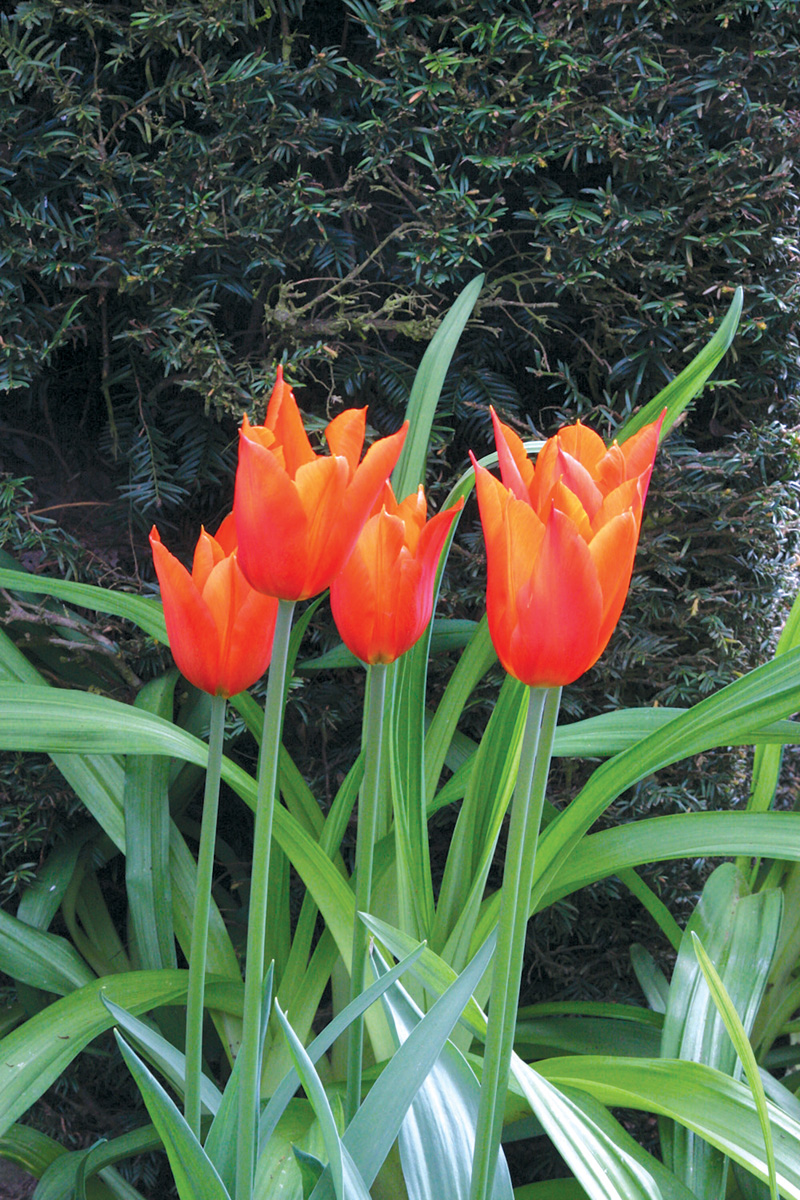
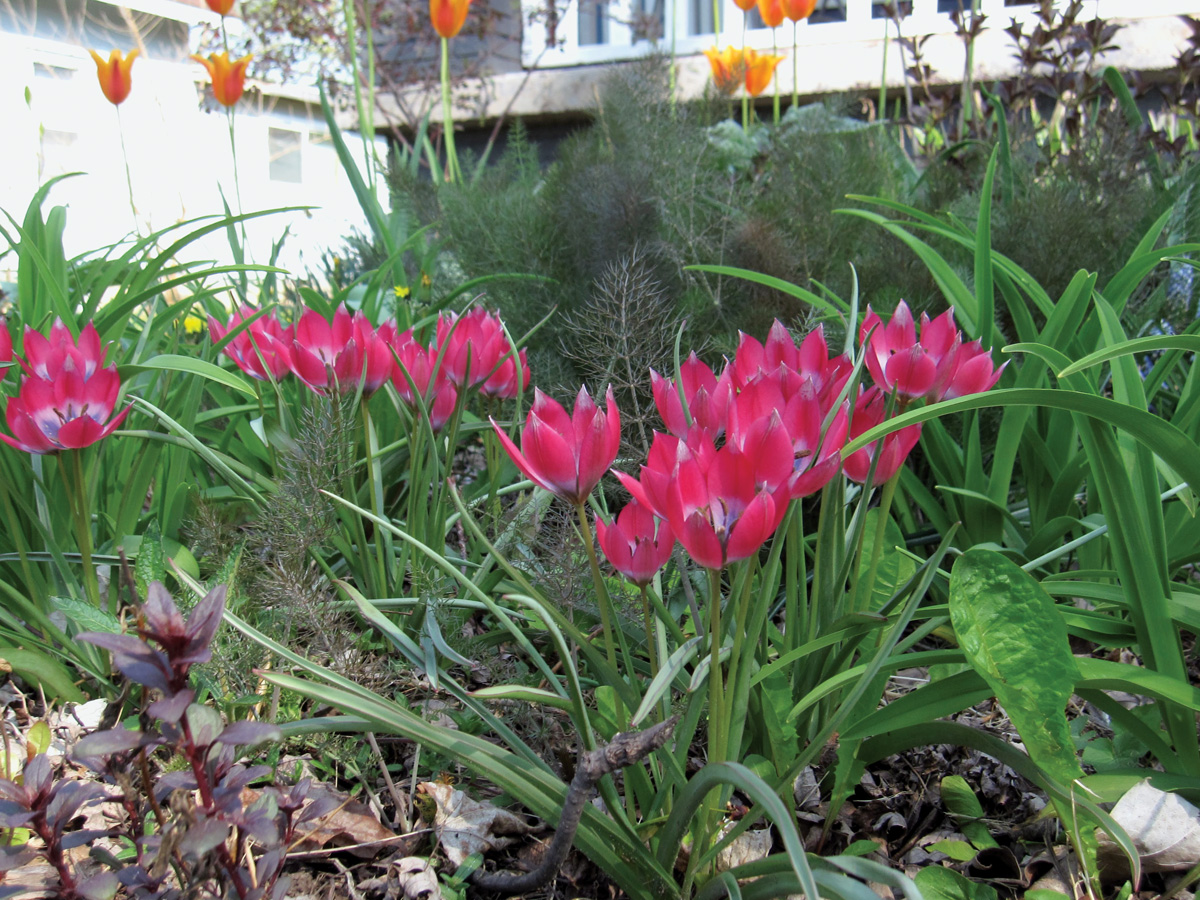
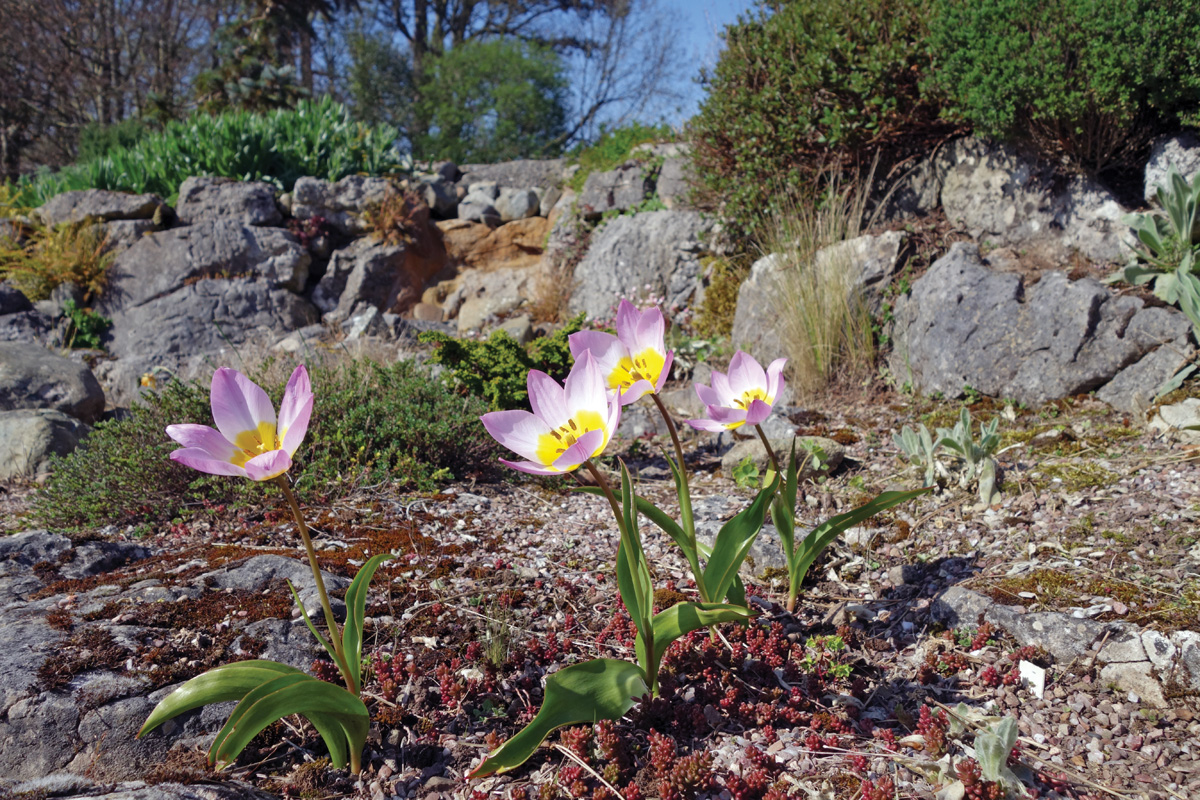
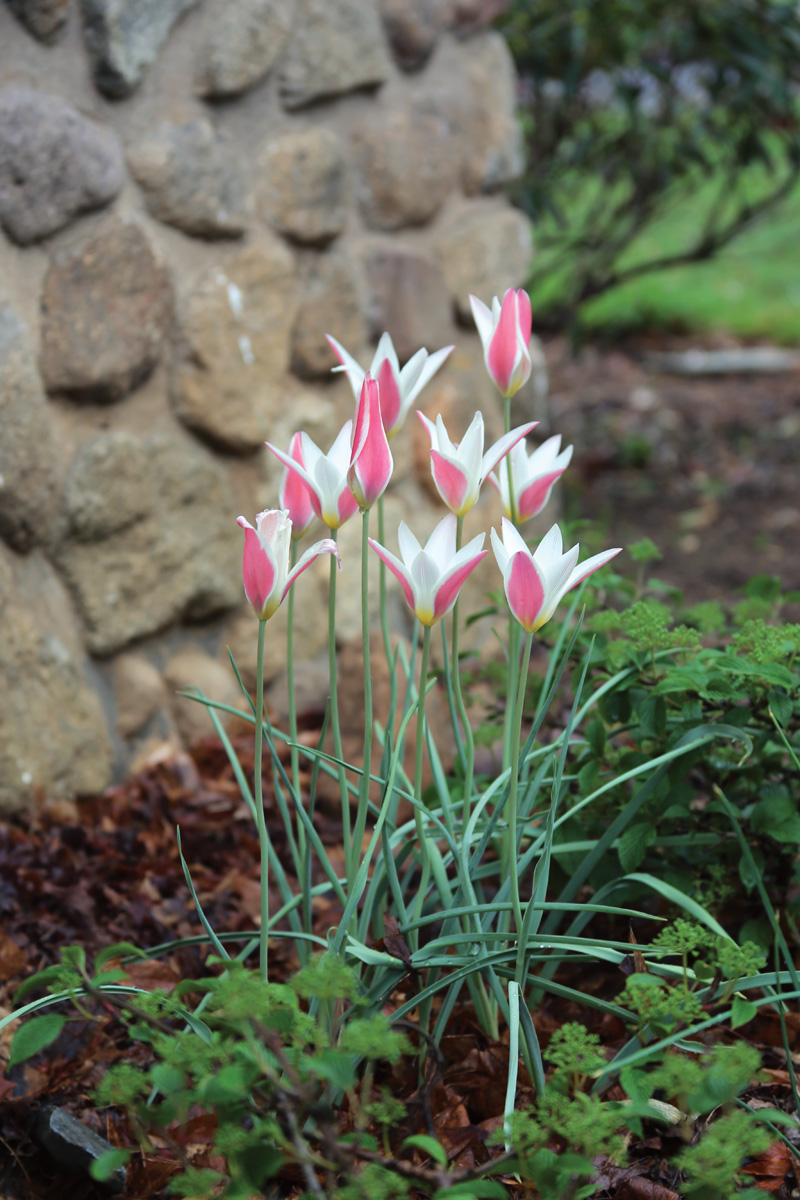
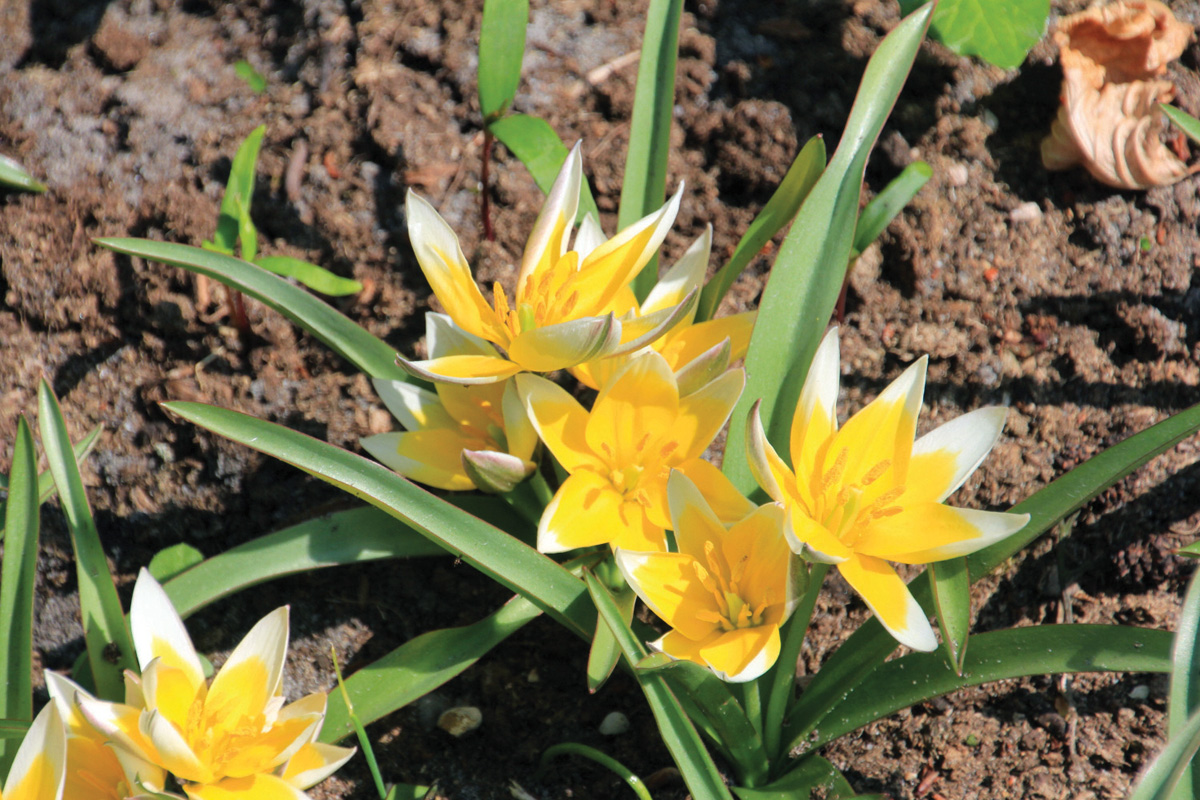
Snowdrops are simply stunning spring bulbs
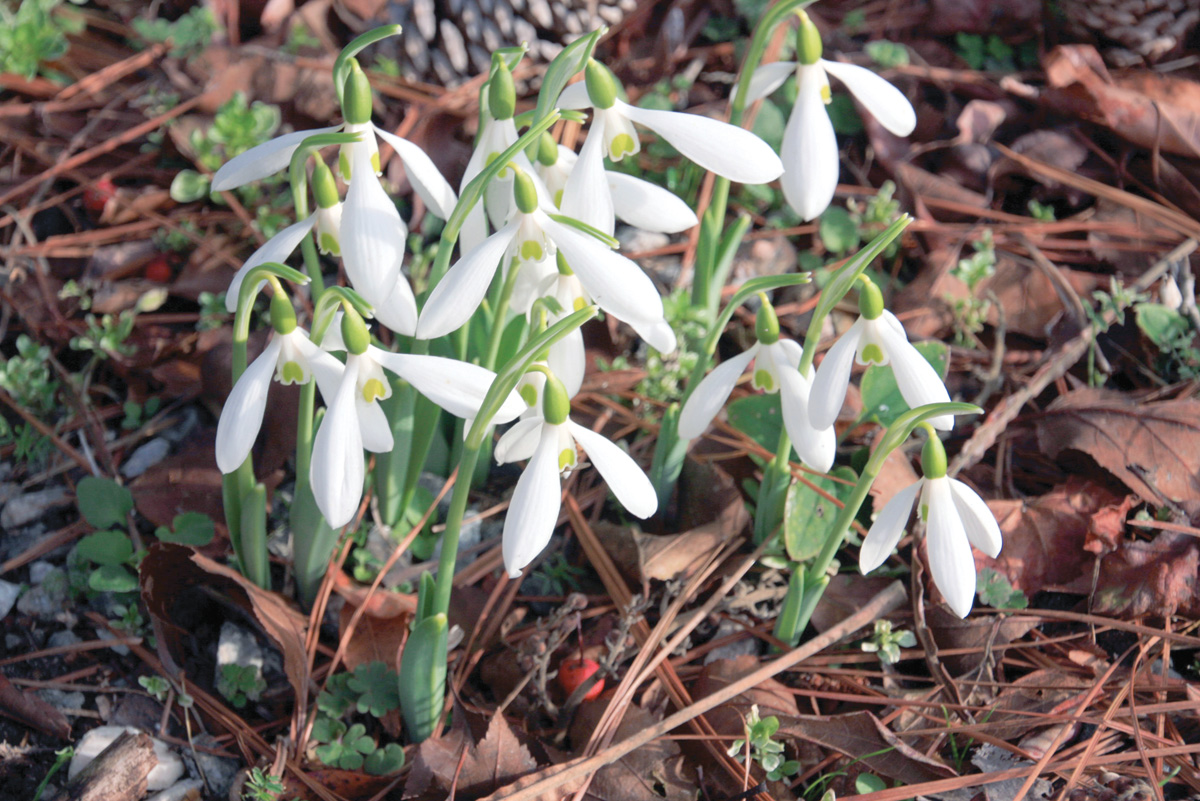
Galanthus spp. and cvs.
Zones: 3–9
Size: 4 to 12 inches tall and 3 to 6 inches wide
Conditions: Full sun to partial shade; well-drained soil
Native range: Southern Europe and western Asia
There are a few ways to go about growing snowdrops. One is the collector route, searching out the rarest, most special snowdrop cultivars and dropping hundreds or even thousands of dollars on a single bulb. You can do that if you want. But it doesn’t make much sense to me, because one snowdrop, or even a clump of five or six, just isn’t that exciting. Sure, you can get down on your knees in the mud and take a close-up photo that will look amazing on social media, but in real life you need dozens of snowdrops to make an impression. Here’s what I’d recommend instead: If you have a small garden, invest in as many bulbs of ‘S. Arnott’ (G. ‘S. Arnott’ syn. ‘Sam Arnott’) as you can afford. It is a stellar snowdrop with big flowers, fragrant and vigorous. Plant a few dozen of them, and you’ll get a display that the neighbors will be asking you about. And for a big garden? Order hundreds—yes, hundreds—of giant snowdrop (G. elwesii). It has bigger flowers and is earlier than the common G. nivalis, but it is quite affordable, and sweeps of it make early spring magic.
Snowdrops are in the same family as daffodils and similarly unappetizing to hungry mammals. Even better, they are one of the more shade tolerant of the classic spring bulbs and will establish beautifully beneath deciduous trees.
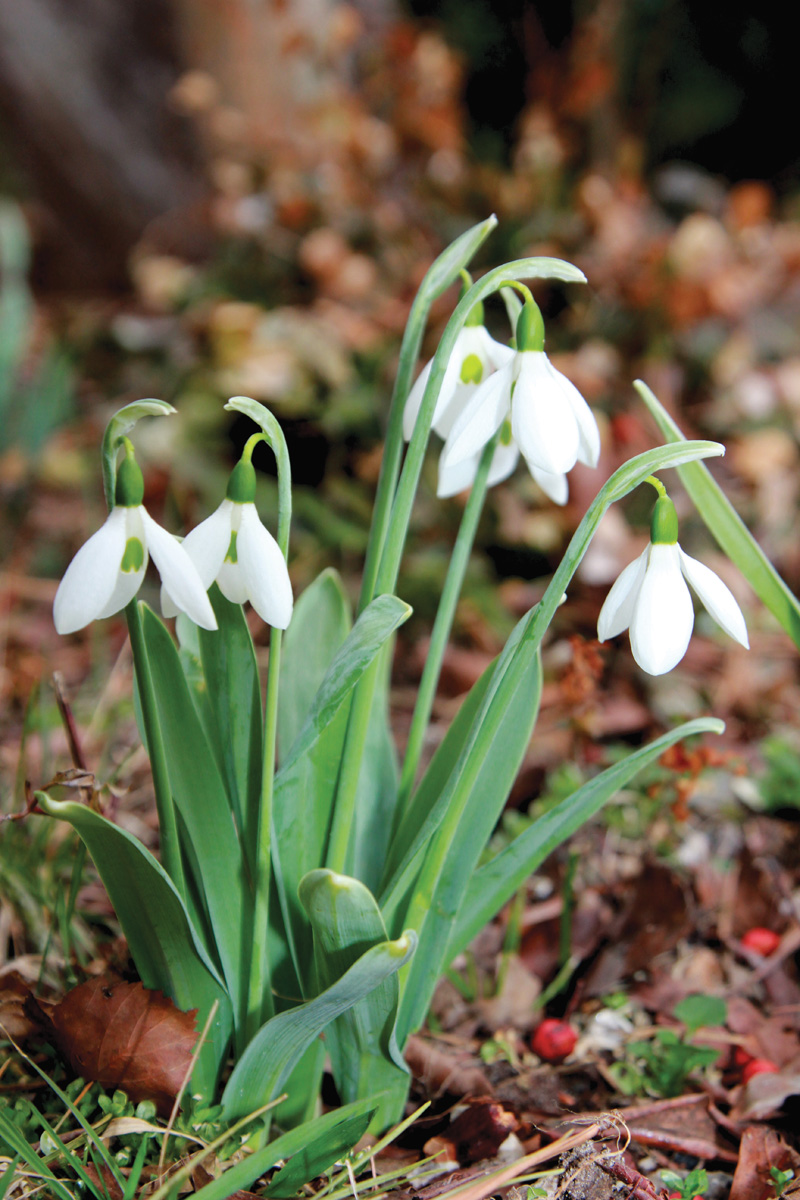
Garden hyacinths offer heavenly scents
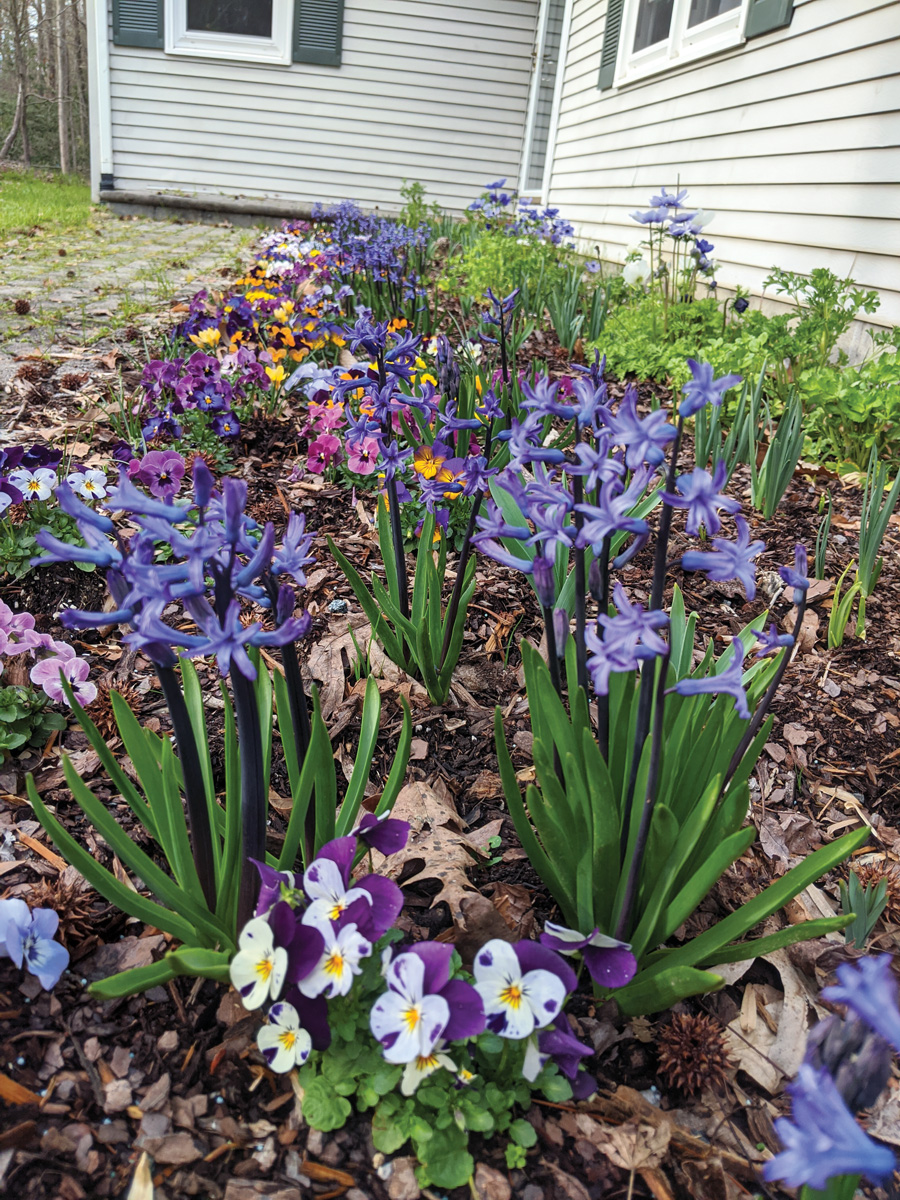
Hyacinthus orientalis and cvs.
Zones: 4–8
Size: 6 to 12 inches tall and 4 to 6 inches wide
Conditions: Full sun; well-drained soil
Native range: Western Asia
It took me a few years to warm up to garden hyacinths. My first thought upon seeing their flowers was that they were too blocky and awkward looking. But then I smelled them, and started thinking about them a little differently. Because the scent is the feature here, for sure. Garden hyacinths aren’t flowers you bend down to sniff; their fragrance carries across the garden, making the whole front yard smell like spring.
And those awkward, blocky flowers? Well, I’ve learned that after a few years in the garden, the bulbs divide and the flowers get a little looser and more natural looking. I also love the multi-flowering Festival series, with flowers that come in pink, white, and blue (pictured). Instead of one thick, blocky stem of flowers, each bulb produces a cluster of looser, more natural-looking blooms.
But if I had to grow just one hyacinth, it would be ‘Gipsy Queen’ (H. orientalis ‘Gipsy Queen’ syn. ‘Gypsy Queen’), which has the most luscious blooms, which are somehow salmon, coral, and peach all at once. It is a tad awkward the first year, but once it settles in and loosens up, it is heaven.
Nothing likes to eat hyacinths, as they’re quite toxic. If you have sensitive skin, wear gloves when handling the bulbs. They do really require full sun to come back and flower well year after year, and they can be prone to rotting out in soils that stay soggy through summer.
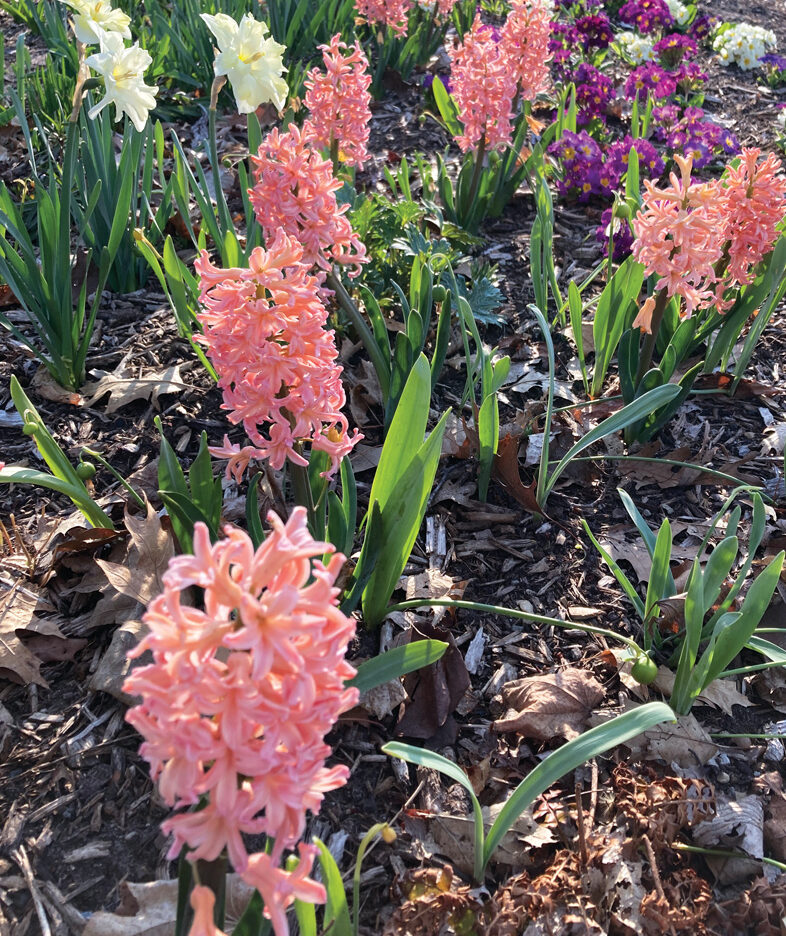
Joseph Tychonievich is an independent plant breeder and author who lives and gardens in South Bend, Indiana.
Fine Gardening Recommended Products
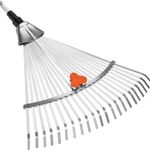
Gardena 3103 Combisystem 12-Inch To 20-Inch Adjustable Metal Fan Rake Head
Fine Gardening receives a commission for items purchased through links on this site, including Amazon Associates and other affiliate advertising programs.
With adjustable tine spacing: suitable for raking coarse and fine material. Flexible, zinc-plated spring-steel prongs. Working width adjustable from 12-20 inches. Sold as head only, handle sold separately.
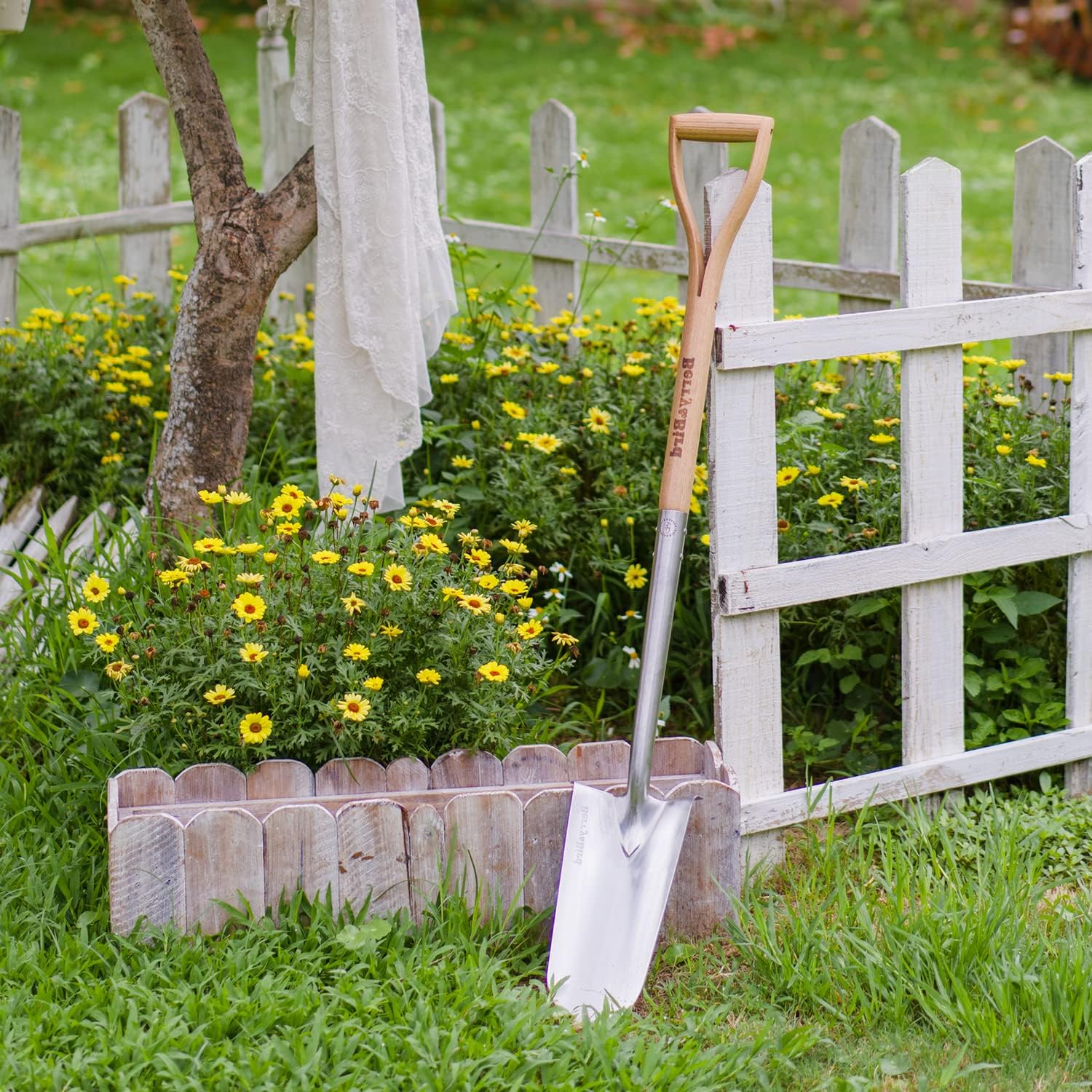
Berry & Bird Rabbiting Spade, Trenching Shovel
Fine Gardening receives a commission for items purchased through links on this site, including Amazon Associates and other affiliate advertising programs.
Ideal Tool for All Gardeners Use: Our heavy duty trenching shovel is designed by a professional gardening tool designer. Lifetime Durability: This heavy duty drain spade is made of high-quality stainless steel, it is very strong and durable, even if it is used for high-strength work, it will not bend. Ergonomic Wood Handle: The handle of this planting spade is made of ash hardwood harvested from FSC-certified forests and has an ergonomically streamlined design, making it very suitable for everyone’s hands. Multi-Use: This digging shovel is generally used for digging trenches, digging holes, transplanting, edging, moving compost, cutting thick turf and furrowing. The sharp blade allows you to cut, scoop, dig, lift and dice in hard soil.

Lee Valley Mini Garden Shear Set
Fine Gardening receives a commission for items purchased through links on this site, including Amazon Associates and other affiliate advertising programs.
These shears have a distinctive finger rest that not only aids grip but allows greater freedom of movement than a conventional handle design. They have a durable powder-coat finish to resist rust and wear, and a simple clasp that locks the spring-action stainless-steel blades closed. The set includes one pair of round-nose shears measuring 5 1/2″ overall with 1″ blades for cutting stems up to 3/8″ in diameter, and one pair of 6 1/2″ needle-nose shears with 2″ fine-tip blades for precise work.




